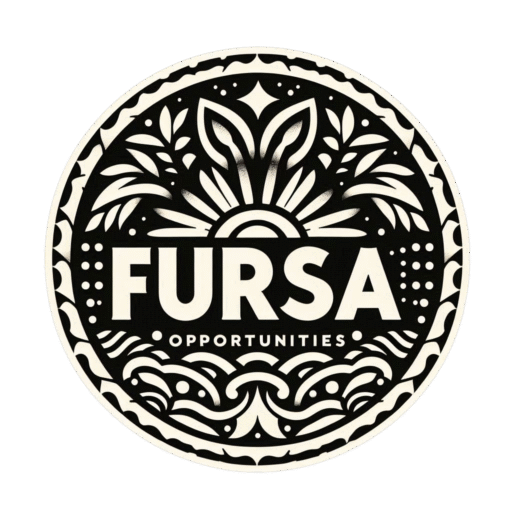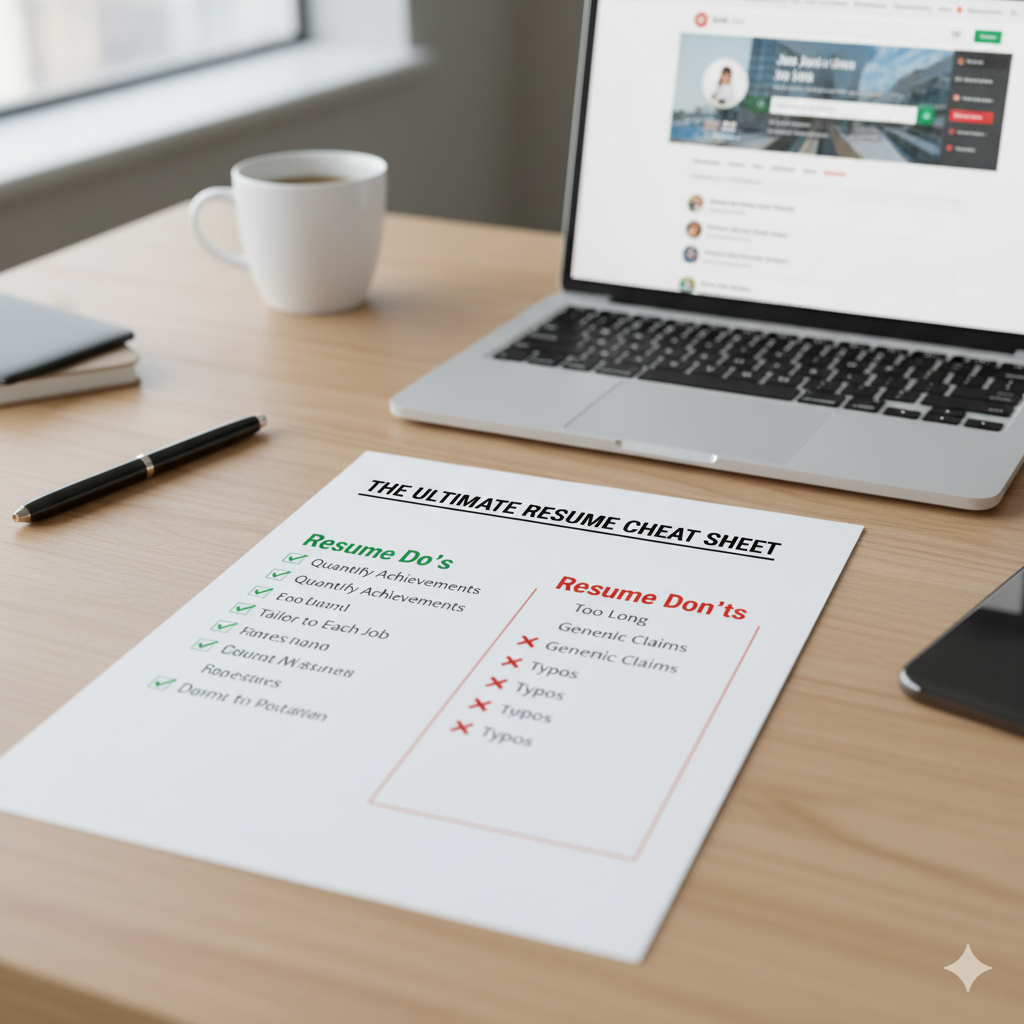Your CV is not just a document; it is your most critical marketing tool. In a competitive job market, a hiring manager or an Applicant Tracking System (ATS) may spend mere seconds deciding if your application deserves a second look.
To ensure your resume lands in the “interview” pile, we’ve compiled the Ultimate Cheat Sheet—28 essential Do’s and Don’ts covering formatting, content, and compatibility.
Master these points, and you’ll transform your resume from a history lesson into a powerful career asset.
1. Formatting for Impact & Readability
A clean, professional design ensures your key information is immediately accessible, not lost in visual clutter.
| DOs | DON’Ts |
| ✅ Keep it to 1-3 pages maximum. | ❌ Make it too long or wordy. |
| ✅ Use a clean, professional design. | ❌ Use fancy or decorative fonts. |
| ✅ Be consistent with formatting. | ❌ Use bright colors or graphics. |
| ✅ Use standard fonts (Arial, Calibri). | ❌ Include photos unless required. |
| ✅ Include clear section headings. | ❌ Include personal information. |
| ✅ Use bullet points for readability. | ❌ Have typos or grammatical errors. |
2. Content Strategy: Showcase Results, Not Just Duties
Recruiters want to know the impact you made, not just the tasks you performed. Focus on quantifiable achievements that demonstrate your value.
| DOs | DON’Ts |
| ✅ Use strong action verbs (Achieved, Led). | ❌ Use generic claims without proof. |
| ✅ Include measurable results. | ❌ List job duties without results. |
| ✅ Quantify achievements with numbers. | ❌ Use the same resume for all jobs. |
| ✅ List relevant skills for the job. | ❌ Include salary history or requirements. |
| ✅ Include industry keywords. | ❌ Lie or exaggerate your experience. |
| ✅ Show career progression clearly. | ❌ Include irrelevant Hobbies |
3. Customization & Beating the Bots (ATS)
The majority of large companies use Applicant Tracking Systems (ATS) to screen candidates. Your ability to get past the software depends on customization and simple formatting.
| DOs | DON’Ts |
| ✅ Tailor your resume to each job. | ❌ Use tables or text boxes. |
| ✅ Match keywords from the job posting. | ❌ Include headers or footers. |
| ✅ Prioritize relevant experience. | ❌ Use special characters or symbols. |
| ✅ Remove irrelevant information. | ❌ Submit without checking ATS compatibility. |
| ✅ Use a targeted summary statement. | ❌ Use uncommon section headings. |
| ✅ Save as a PDF (unless specified). | ❌ Include graphics or charts. |
4. The Final Polish: Avoiding Common Mistakes
These small details are what separate professional applications from careless ones. Don’t let a minor oversight cost you the interview.
| DOs | DON’Ts |
| ✅ Have someone proofread it. | ❌ Include outdated experience (>10 years). |
| ✅ Include a LinkedIn profile link. | ❌ Write in first person (I, me, my). |
| ✅ Name the file professionally (Name_Resume). | ❌ Include hobbies unless relevant. |
| ✅ Keep your resume updated. | ❌ Use a generic file name. |
| ✅ Use white space effectively. | ❌ Send without a cover letter if requested. |
Next Step: Implement and Succeed
The takeaway is clear: Attention to detail and strategic customization are non-negotiable.
Review your current CV / Resume against this cheat sheet today. Focus on replacing generic language with quantifiable achievements, tailor your content to the specific role you are targeting, and triple-check your grammar.
Now, go update your file, save it as a PDF, and start applying! Good luck in your job search!
Get to Know Symmetric Auditing and Management Consultants: Your Partner for Business Success
Read also: If an interviewer asks me what I am expecting as my salary, what should I answer?
Read also: The Real Reason You’re Stuck in Your Career

